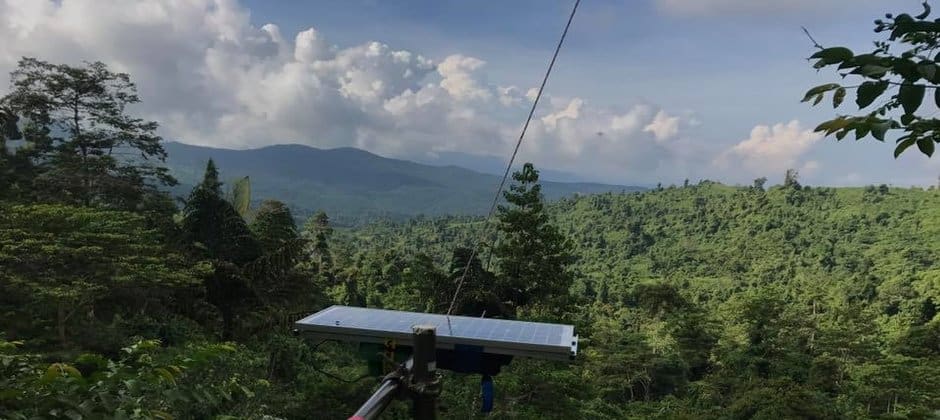Share this article
Soundscapes reveal habitat quality
By setting out recorders in the middle of ecosystems, researchers have developed unique audio “fingerprints” representing the whole system to tell them whether habitat is high or low quality.
“Traditional ecological monitoring techniques require laborious work or setting traps and physically going into the field looking for animals,” said Sarab Sethi, a postdoctoral researcher at Imperial College London. “If you want large scale insight into how an ecosystem is changing, [those techniques don’t] rescale very well.”
Researchers have previously recorded the noise made by a number of bird species on small islands to determine seabird recovery. But in a new study published in the Proceedings of the National Academy of Sciences, Sethi and his colleagues recorded soundscapes — or audio of entire ecosystems — which he said are more efficient and don’t take months and months to develop.
“We were looking to answer whether you could use soundscapes in a generalizable way to predict habitat quality,” he said.
Sethi and his colleagues tested soundscapes in the tropical forests of Borneo and in the temperate forests in Ithaca, New York — two very different ecosystems. There are hundreds of species in these systems, and Sethi said instead of training a system to recognize the sounds of individual species, they trained computer systems to recognize the unique overall sounds of entire ecosystems.
Then, they determined how soundscapes were associated with habitat quality. In addition, they set out to 30 sites in Ithaca and 14 sites in Borneo to determine habitat quality. They trained their computer algorithm using the information they gathered in the field from these sites. By entering new soundscape data into the system, the computer could then compare it and determine habitat quality.
Another part of their study focused on detecting anomalies such as the sounds from illegal poaching and logging. “We know a certain area has a specific sound fingerprint, but do we know if fingerprints change if something strange is going on?” Sethi asked.
To test this out, Sethi and his colleagues played sounds of chainsaws and gunshots through speakers in different ecosystems and recorded them. Sethi said the algorithm successfully detected these anomalies in the recordings.
One practical implication of this, Sethi said, is deploying acoustic monitors that can alert managers to poaching or illegal logging in real time.
Sethi and his colleagues continued to record audio in Borneo in the SAFE Acoustics Monitoring Project to quantify logging influences in the area.
The next step, Sethi said, is to use audio soundscapes to measure ecological resilience and warn about species collapse or changes in the ecosystem. “We want to predict tipping points before it happens,” he said. “A fully automated system can see the signs before it’s too late.”
Header Image: Researchers placed audio recorders in the middle of Borneo ecosystems to collect recordings of nature in the entire systems. Courtesy Sarab Sethi








